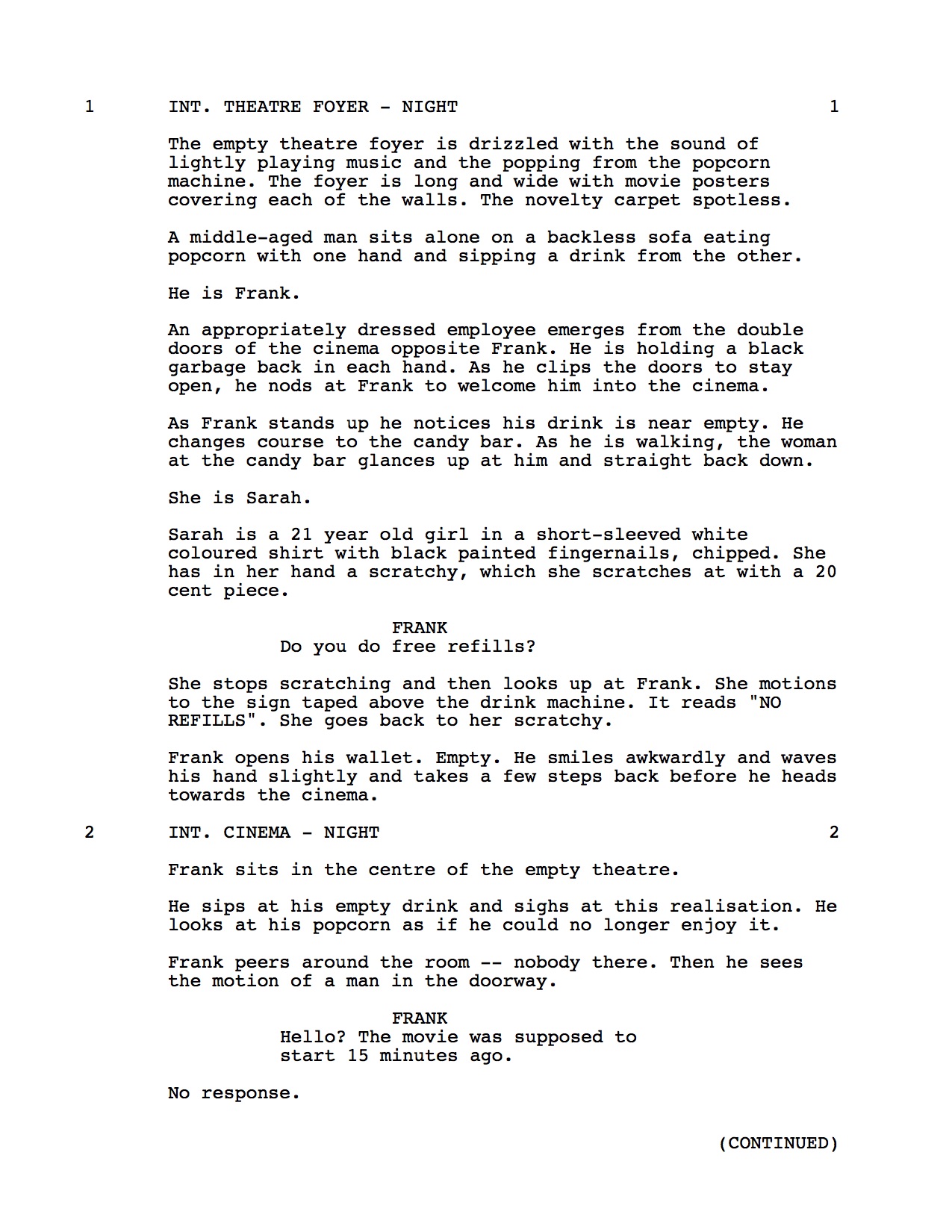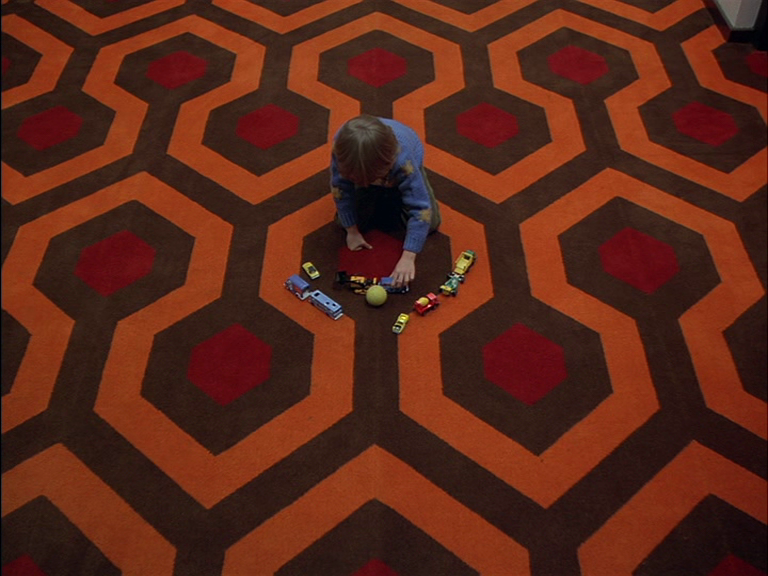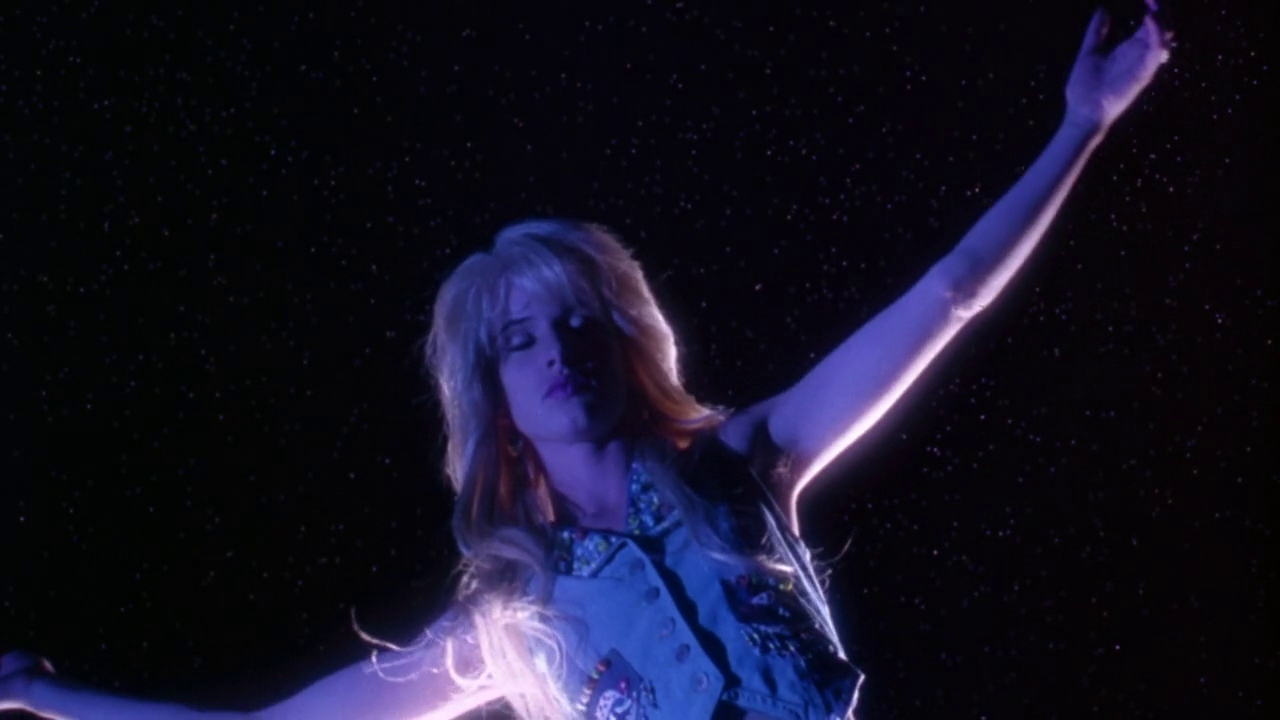Having never really considered the world of a film in much depth before, this studio seemed really intriguing to me. Diving deep into screen worlds of screenplays was something I had never undertaken before so that in itself served as some of the best learning tasks I’ve had in this entire course. Another World as a studio, taught me to look at specific choices a screenwriter makes when building a world and telling a story. Things that can often get looked over if you aren’t looking deep enough.
When we started looking at creating our own worlds, I initially struggled with this because of how daunting the task seemed, having to create this new world with it’s own tone, ideologies, pace and so many other elements. We had to create this world with it’s own internal logic. I knew I wanted to create a world for the form of a short film, so I begin thinking about the type of world I wanted to work with. From the beginning of this studio I was more drawn to the film worlds we explored that had a focus on it being isolated or enclosed, without much outside influence, so I decided I’d create a world to match that. The main film world I looked into was the world of Stanley Kubrick’s 1980 classic The Shining, a film that simply could not have taken place anywhere but the mountain-isolated Overlook Hotel. There’s a lack of a sense of community, which almost makes it feel as though outside the frames of the film, nothing exists, which is something that I also really wanted to work with in my world.
Deciding on the starting perimeters of my world, I decided I wanted to work within the walls of an old fashioned movie theatre. Creating characters for this world came really easy to me at this point, because since I knew of the tone the world had, I knew the sorts of characters that would exist within it. I decided on three characters who were from this world, who all worked there and all were very strange eccentric characters. Before building the synopsis of the film, I knew I wanted to have a fourth character who wasn’t from the world and worked as naive eyes for the audience to view this world. His name is Frank.
Writing the script for this film was so exciting for me. When I had a very rough draft, we worked in workshop groups and it was so interesting because so many people asked me all these questions about my world that I honestly wouldn’t have considered if it weren’t for this format of feedback. My script went through so many different changes each workshop and I’m so grateful that we had those sessions. Little bits of dialogue and tones people added to them in table reads made me realise different parts of my characters I didn’t see before.
In the final table read in the last week of classes, there was an open conversation after where we could ask questions about our script. Being able to ask questions I had about my own script really worked well because there were almost debates between people on how they saw aspects of it, like the ending. Two people completely disagreed with each other on how they thought the ending worked and it was put to me that the ending should be a result of how I want the audience to feel and that really helped me in deciding the final aspects of the script.
Looking back to how I thought about films and screenplays at the start of this studio, I have honestly learnt so much invaluable things that I will further apply to my creative practices. I have this new way of thinking about screen worlds and having my final proof of narrative for my research project, I’m really happy with my first attempt at creating my own world.
References:
The Shining. (1980). [film] Directed by S. Kubrick.
I declare that in submitting all work for this assessment I have read, understood and agree to the content and expectations of the assessment declaration.
















 (Natural Born Killers, 1994)
(Natural Born Killers, 1994)